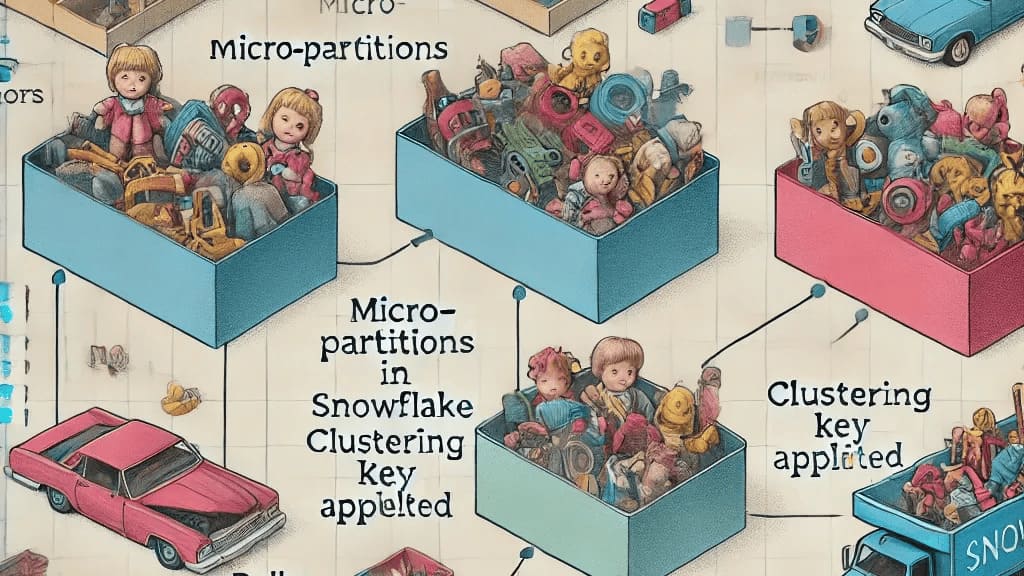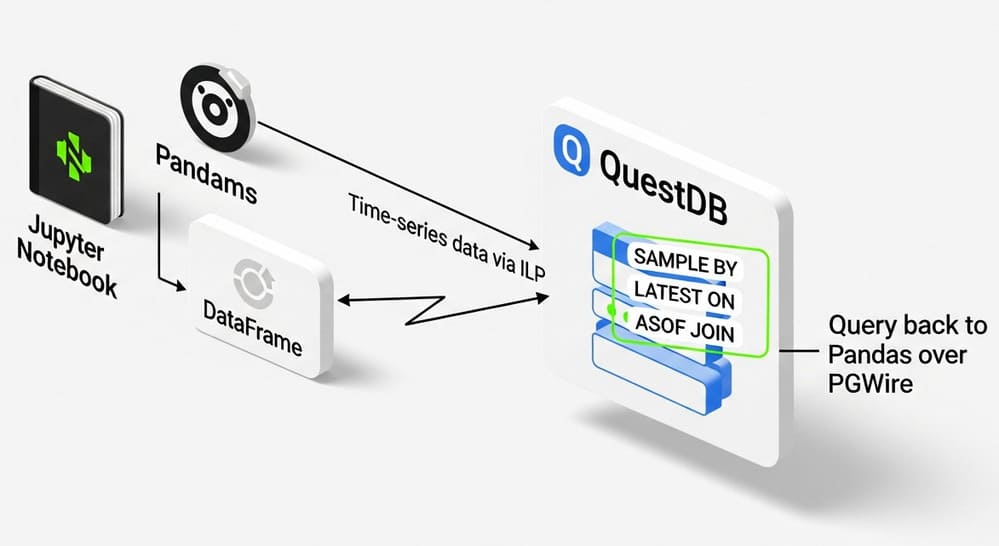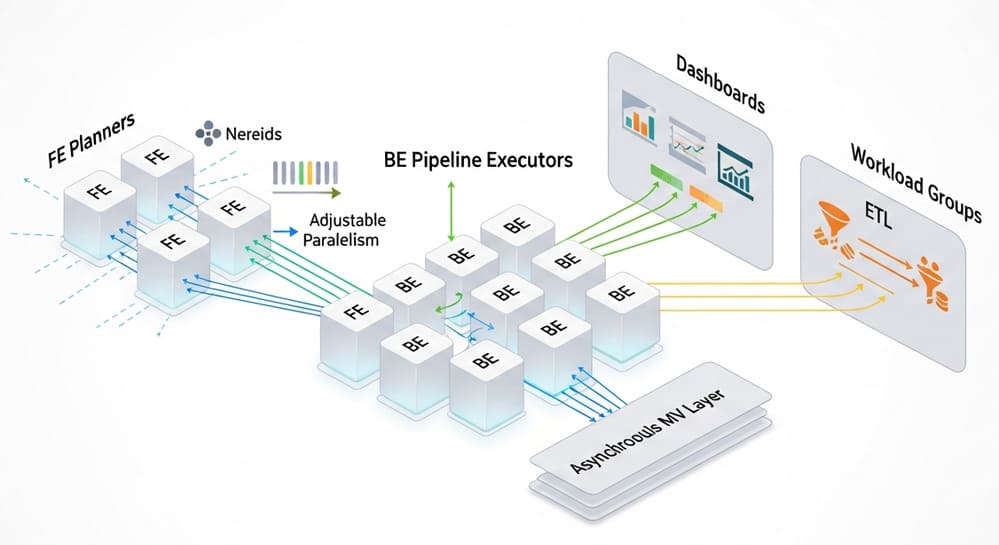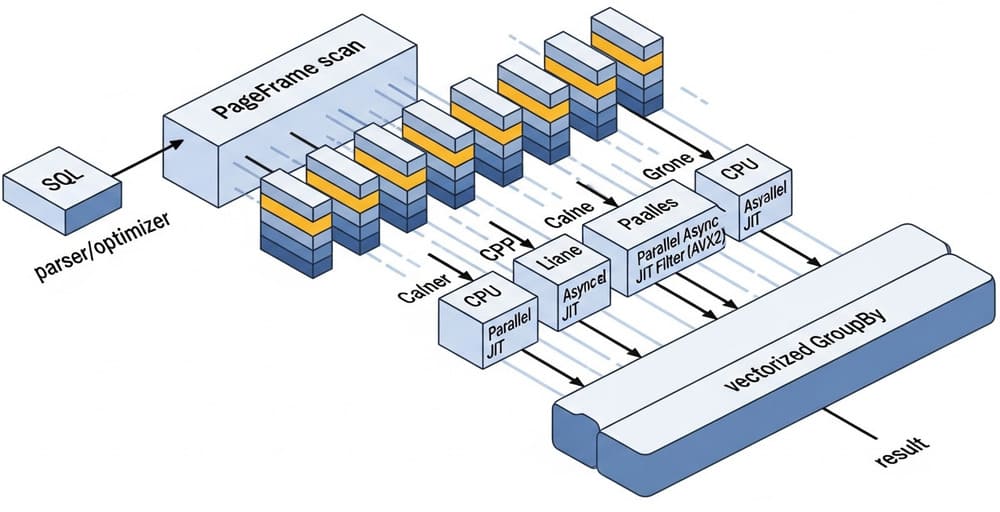When working with Snowflake, understanding the difference between micro-partitions and clustering keys is crucial for optimizing your data storage and query performance. These concepts might seem technical, but let’s break them down with a simple analogy: think of your data as toys and Snowflake as the system organizing these toys into boxes.
Micro-Partitions: Snowflake’s Boxes
Imagine you have a huge collection of toys. Snowflake, being the meticulous organizer, automatically puts your toys into boxes (micro-partitions) when you load the data. These boxes are designed for efficient storage and retrieval.
To make things faster, Snowflake labels each box with metadata, like the alphabet range of toys inside. For example:
- Box 1: Toys starting with “A” to “E.”
- Box 2: Toys starting with “F” to “J.”
- And so on…
When you need a specific toy, Snowflake quickly scans these labels to decide which boxes to open. This approach, called partition pruning, avoids searching through every box, saving time.
Clustering Keys: Organizing Inside the Boxes
Now, let’s say the toys inside each box are randomly placed. While the box labels make it easy to find the right box, you might still have to dig through the contents to locate your toy. This is where clustering keys come in.
By adding a clustering key, you’re essentially reorganizing the toys inside the boxes (and sometimes across multiple boxes) to make searches faster. For instance:
- Group all toys of the same color together.
- Or arrange them by type, like action figures, cars, or puzzles.
If you frequently search for blue action figures, clustering ensures that these toys are grouped together, reducing the search time even further.
How to Create or Alter Tables with Clustering Keys
Creating a Table with Clustering Key
When you create a new table, you can define a clustering key using the CLUSTER BY clause.
Example:
CREATE TABLE sales
(
id INT,
sale_date DATE,
region STRING,
amount FLOAT
)
CLUSTER BY (sale_date, region);In this example:
- The table is organized by sale_date and region.
- Queries filtering on these columns will benefit from optimized data layout.
Altering an Existing Table to Add a Clustering Key
If you already have a table and want to add a clustering key, you can use the ALTER TABLE command.
Example:
ALTER TABLE sales CLUSTER BY (sale_date);This command adds a clustering key on sale_date, and Snowflake will begin reclustering the data in the background.
Removing a Clustering Key
If a clustering key is no longer needed, you can remove it.
Example:
ALTER TABLE sales DROP CLUSTERING KEY;Cross-Box Organization
Sometimes, organizing toys by one method (like color) can affect how quickly you can find them by another method (like size). Snowflake balances this with its automatic reclustering feature, which keeps your data logically organized while maintaining efficiency. This ensures that your reorganized toys stay tidy without constant manual effort.
A Practical Example
Without Clustering:
You have a table of sales data with millions of rows. Snowflake automatically stores this data in micro-partitions and labels each partition based on ranges of the sale_date column.
When you query for sales in January 2023, Snowflake scans the metadata to find partitions covering that date range. But since the data within these partitions might not be perfectly organized by date, it may still take extra effort to retrieve the exact rows.
With Clustering:
You add a clustering key on the sale_date column. Snowflake reorganizes the data so rows with similar dates are grouped together. Now, queries for January 2023 are faster because fewer micro-partitions and rows need to be scanned.
When to Use Clustering Keys
Clustering keys are most beneficial for:
- Large tables: With millions of rows and frequent queries filtering on specific columns.
- Selective queries: When you often filter or aggregate data based on certain columns like region or order_date.
However, for smaller tables or general-purpose queries, the default micro-partitioning might be sufficient.
Summary: Micro-Partitions vs. Clustering Keys
- Definition:
Micro-Partitions: Physical storage units created by Snowflake.
Clustering Keys: Logical ordering of data defined by the user.
- Management:
Micro-Partitions: Fully automated by Snowflake.
Clustering Keys: Defined and influenced by the user.
- Purpose:
Micro-Partitions: Store data efficiently and enable partition pruning.
Clustering Keys: Optimize query performance by organizing data layout.
- Creation:
Micro-Partitions: Automatically created during data loading.
Clustering Keys: Explicitly defined using CLUSTER BY.
The Takeaway
Think of Snowflake as an efficient organizer for your data. It uses micro-partitions (boxes) to store and manage your toys (data), ensuring they’re easy to locate. If you need faster access for specific searches, you can organize inside the boxes (clustering keys) to make retrieval even quicker. This approach balances ease of use with performance, making Snowflake a powerful tool for managing data at scale.
So, whether you’re managing toys or terabytes, Snowflake’s architecture makes data handling simple, efficient, and scalable.











Leave a Reply